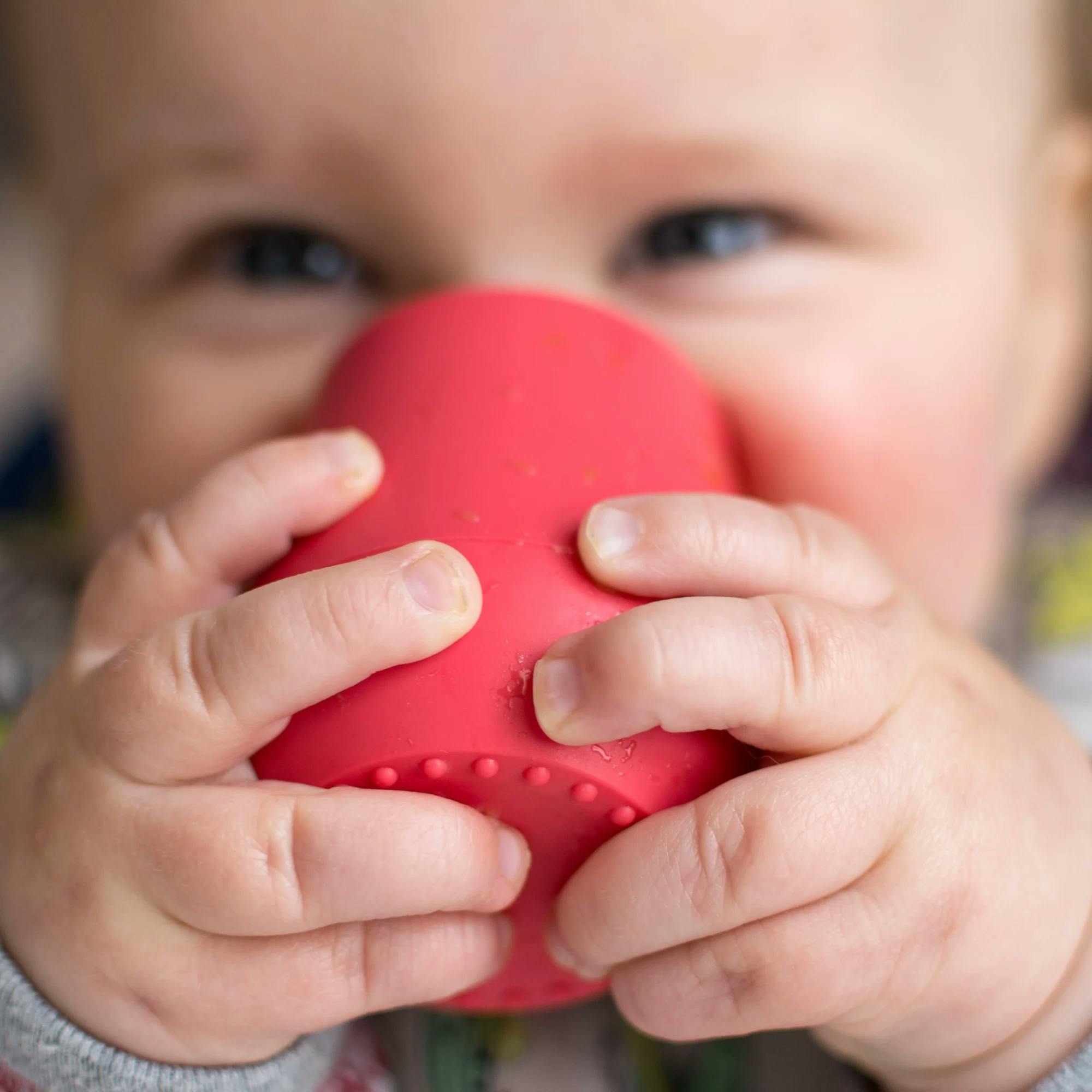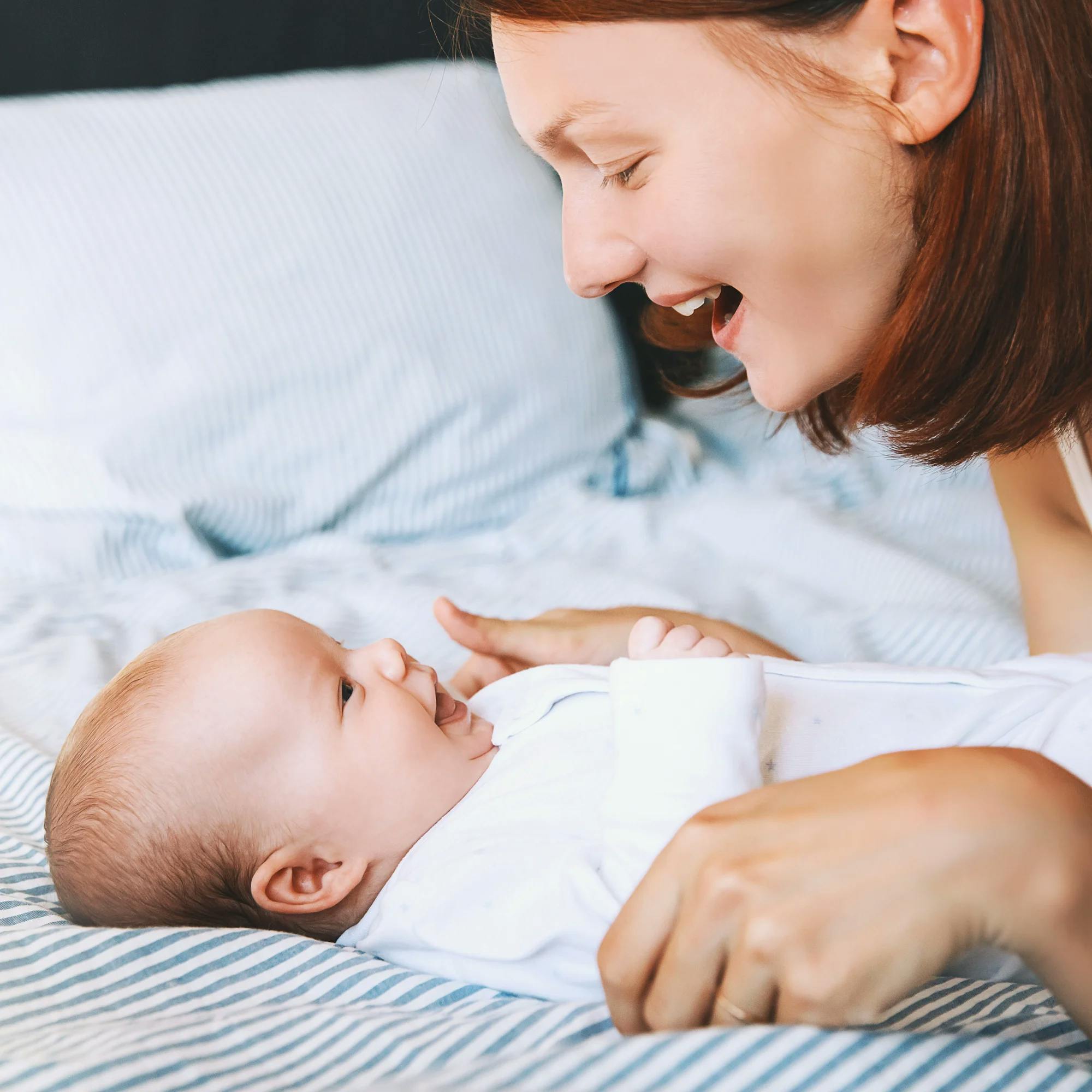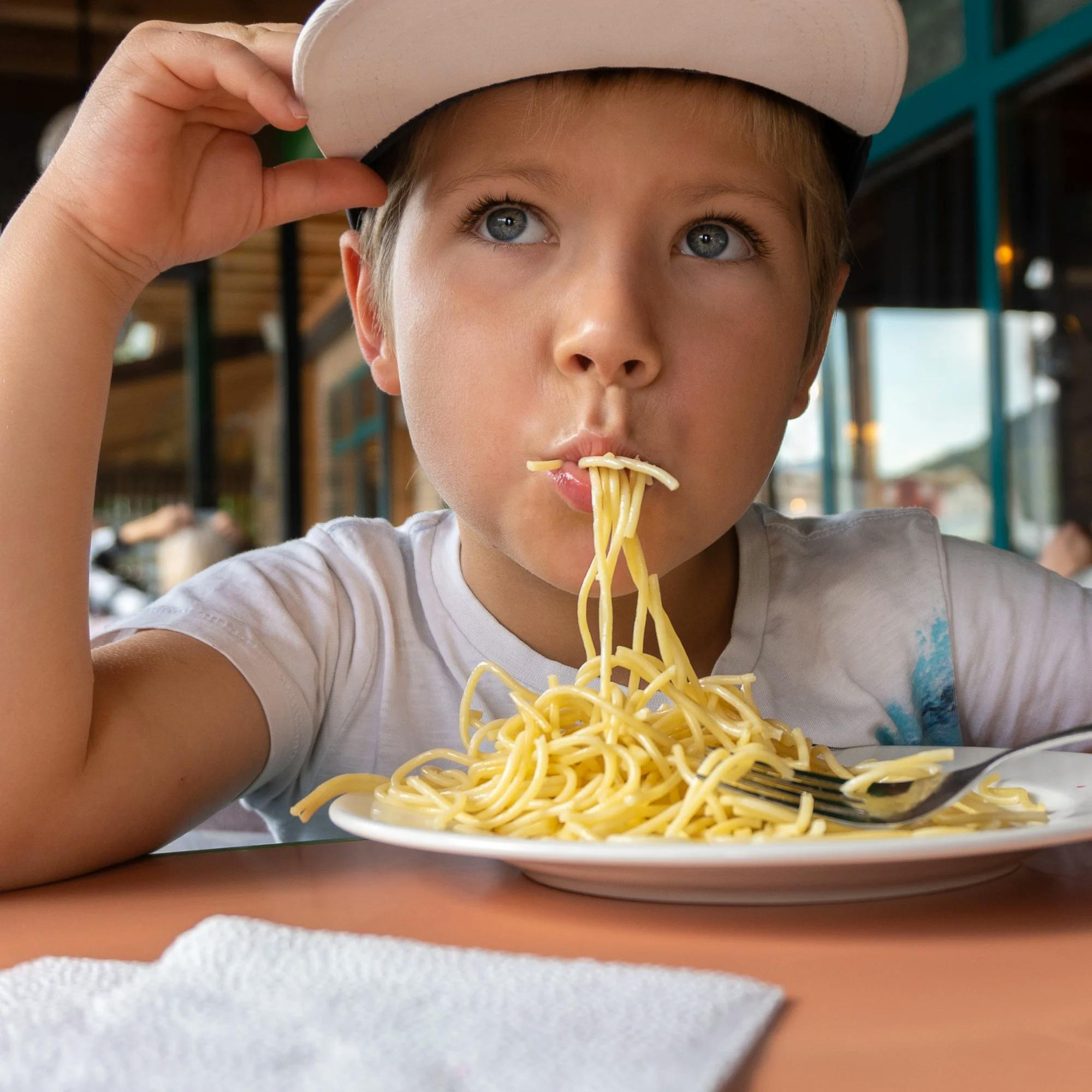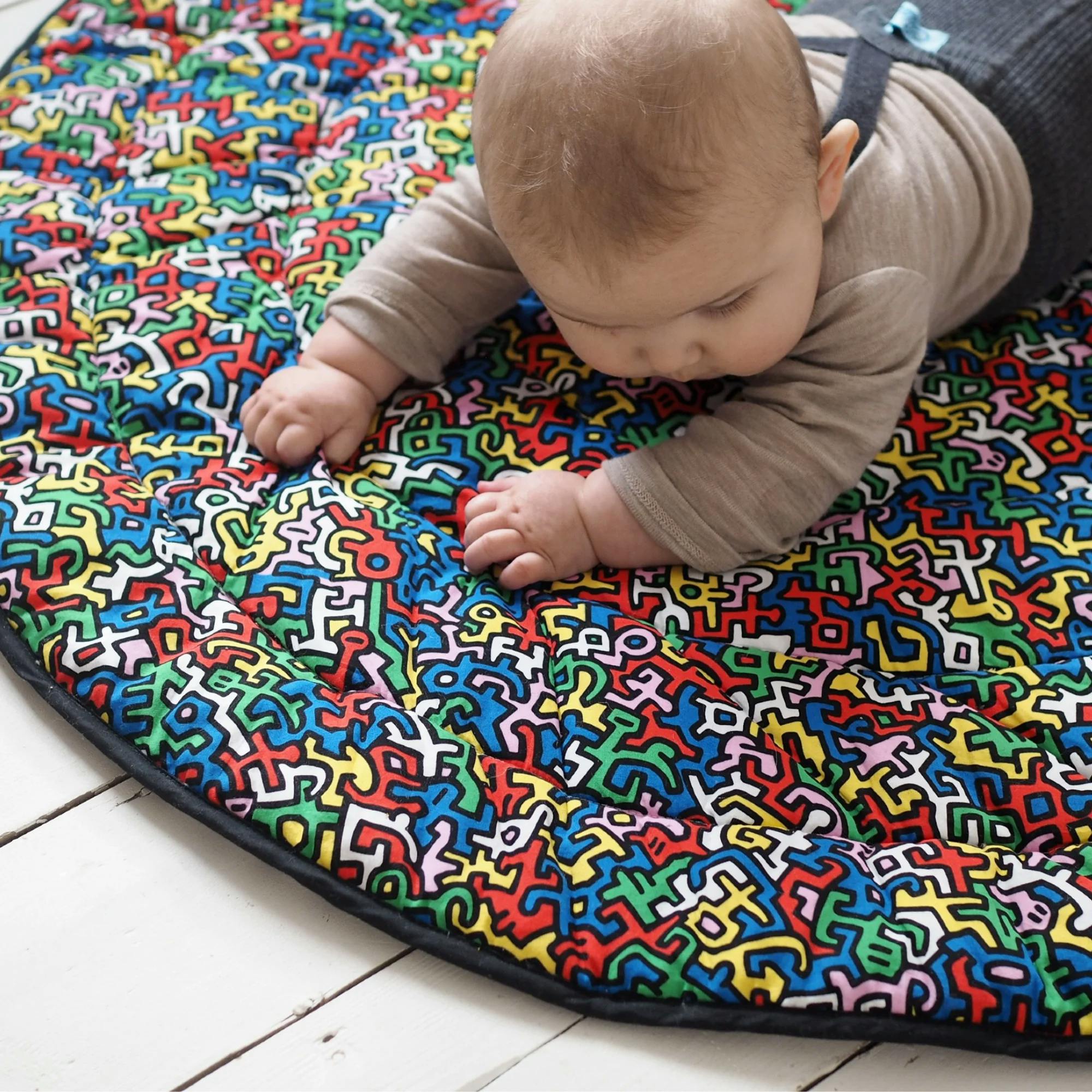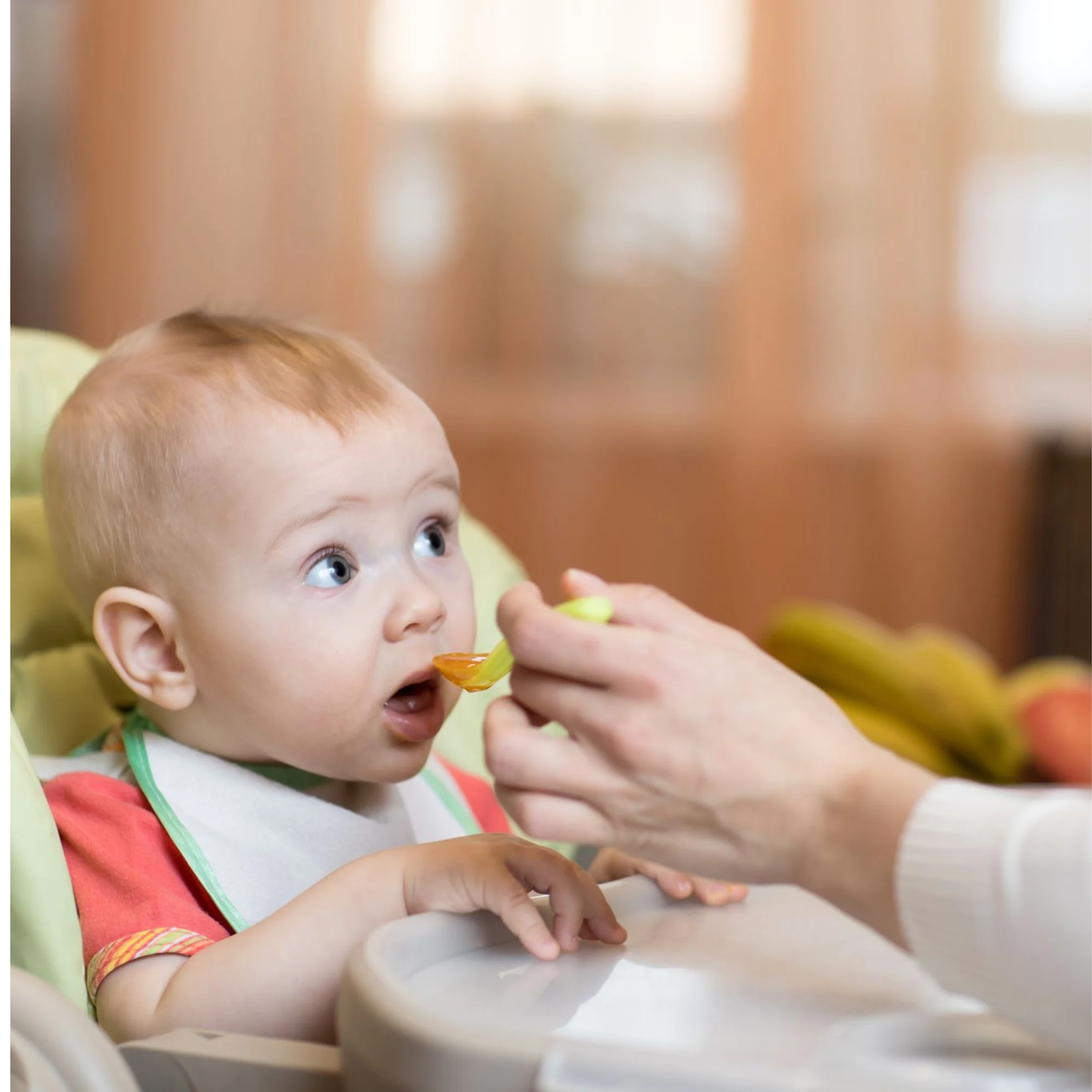There is a well-known theory about what happens when a baby hiccups in the womb. It may mean that they’re practicing their breathing. Babies are truly incredible–they can suck and swallow in the womb as early as 14-15 weeks gestation! And within just the first few days of life, a baby develops a suck-swallow-breathe pattern.
Lots of exciting milestones happen during the first year of your child’s life, and that includes how and what they eat and drink. The American Speech-Language-Hearing Association (ASHA) recently released new feeding and swallowing milestones. We’re here to break down what this information means and why it’s important to know. Plus, we’ll include tips for teaching your baby to use a cup as they reach their first birthday.
Keep in mind: The American Academy of Pediatrics (AAP) recommends babies drink breastmilk or formula for the first year of life as their main source of nutrition, with the option to gradually introduce solid foods around 6 months of age.


Feeding and swallowing milestones for babies
Birth to 3 months
Your tiny baby will soon begin to hold their head up while you’re supporting them. They should instinctively turn their head toward a nipple and open their mouth. At this point, it seems pretty simple: Babies typically latch to a nipple to suck and swallow. Remember, they should only be drinking breast milk and/or formula.
4 to 6 months
As your baby grows, they gain more control over their little body. You should see your baby begin to bring their hands to the breast or bottle, pat it, and hold onto it during feedings. They will open their mouth for a spoon and use their tongue to move food to the back of their mouth to swallow. You may begin to introduce smooth baby foods, or purees, at 4 to 6 months old, but always check with your pediatrician first.


6 to 9 months
Your baby is getting bigger and stronger, so they should hold their head up when sitting and lean forward to get any food you present to them. Your baby may begin to pick up food with their fingers and bring it to their mouth. This is a huge time for babies to learn how to feed themselves! As they are learning, it’s best to place your baby in a highchair with a footrest for support.
You may wonder at what age your baby can start using a cup. This is a great time to introduce utensils, like a spoon and an open cup for drinking. (Spills to be expected!) You will likely have to hold the cup for your baby as they learn. However, you can also try open cups with handles for your baby to hold on to.
This is a great time to introduce utensils, like a spoon and an open cup for drinking (expect spills!).
Remember, the goal for babies between the ages of 6 and 12 months is to practice cup drinking skills, not replace the breast or bottle. Starting early allows a lot of time for practice in low-pressure situations, before they have to wean off the bottle.
At age 6 to 9 months, your baby is likely ready to try baby foods with some lumps, like mashed potatoes and oatmeal. Babies also learn to munch on soft, chewable solids, like pancakes and cheese. Make sure to cut these into strips. This makes it easier for baby to hold and reduces the risk of choking!


9 to 12 months
Wow! Your baby is rounding out their first year of life. They should now be able to hold a bottle or cup with both hands and sit upright in a high chair. Your baby will likely still self-feed with their fingers, but they are getting better at holding a spoon during mealtimes.
You may introduce soft, bite-sized foods like sliced bananas and pasta. Yum! You’ll notice your baby taking small bites from larger pieces of food, too. Their chewing skills get even better as they advance to what is called a “rotary chew.” This is the most mature chewing pattern!


How to transition your baby to drinking from a cup
Experts recommend babies wean from bottles around 12 months of age and get comfortable drinking from cups by 18 months of age. This is because prolonged bottle use can cause a variety of concerns, including cavities, tooth alignment problems, and increased risk for obesity. Plus, drinking from an open cup or straw cup is a lifelong skill, and it’s ideal for oral motor skill development.
Here are some tips for teaching your baby to use a cup:
Begin offering a cup when your child is around 6 months of age. You can use open cups with cut-out lids, baby-sized cups, and/or straw cups.
Make the transition gradual. Try dropping one bottle feeding from your baby’s daily routine each week. For example, if your baby drinks 3 bottles each day, you might try stopping the afternoon bottle. Instead, offer a snack and formula, breastmilk, or cow milk in a cup. Continue dropping bottle feedings as the weeks progress.
Stay consistent with bringing open cups to mealtimes.
Learning to drink from a cup is a skill that takes time and practice for babies to develop! Give yourself patience and grace throughout this journey.
If you have problems or concerns about weaning off the bottle, be sure to contact your child’s doctor or a speech therapist for help. There are speech therapists who specialize in pediatric feeding, helping children who have difficulty with the physical act of eating or swallowing. Trust your instincts and reach out if you think your child might need support!
How Expressable Can Help
Concerned your child isn't reaching age-expected milestones? Looking for communication support from a professional? Expressable is a national online speech therapy practice serving children and adults. We treat all major areas of communication and feeding, offer flexible hours including evenings and weekends, and accept most major health insurance plans. We’re proud to have earned more than 3,000 5-star reviews from our clients (4.9/5 average).
Our therapy model is centered on parent and caregiver involvement. Research proves that empowering caregivers to participate in their loved one’s therapy leads to better outcomes. That’s why we combine live, 1-on-1 speech therapy with personalized education and home practice activities for faster progress.
Communication is more than words. It’s how we share how we feel and show who we are. We’re here to help you or your child do just that.

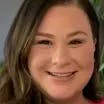 Alexis Irazoque, M.S., CCC-SLP
Alexis Irazoque, M.S., CCC-SLP